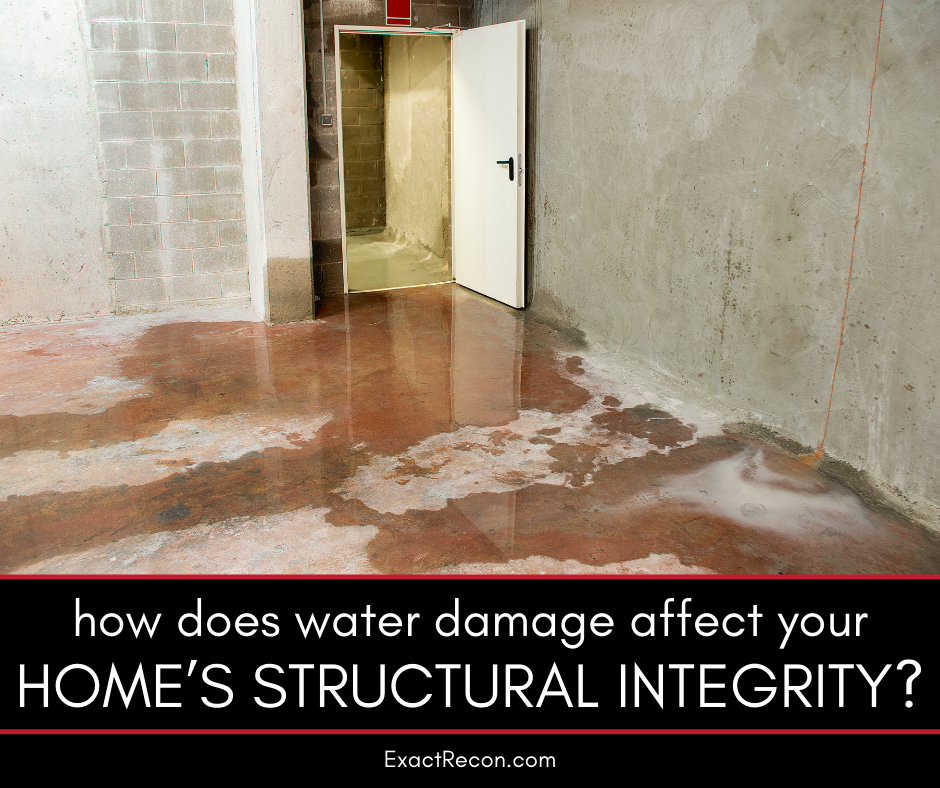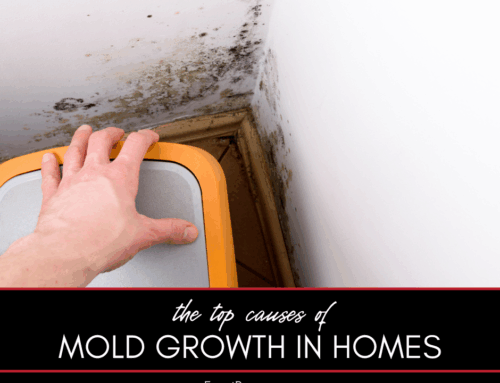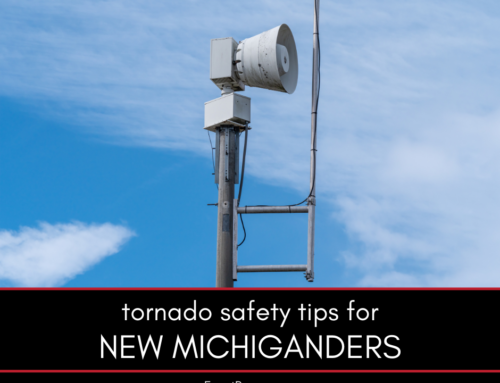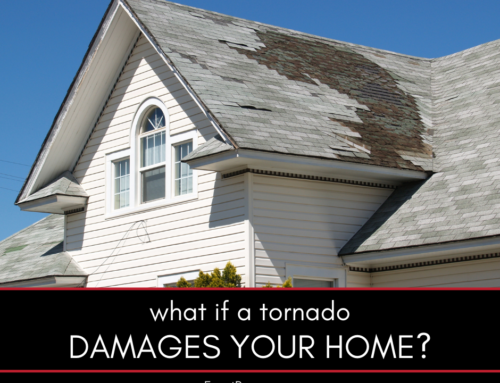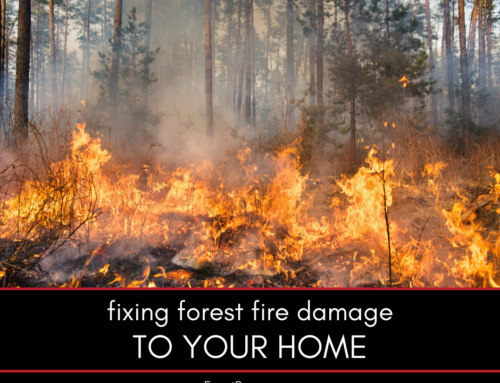Water damage is one of the most common and potentially devastating problems a homeowner can face. Whether caused by floods, leaks, or burst pipes, water damage can weaken your home’s structure over time, leading to costly repairs and safety risks. Understanding how water damage affects your home’s structural integrity is essential for preventing long-term issues and protecting your investment.
How Does Water Damage Affect Your Home’s Structural Integrity?
Water damage can compromise your home’s structure in various ways, from rotting wood to eroding foundations. This guide explores:
- The immediate effects of water on structural materials
- Long-term damage caused by prolonged exposure to moisture
- Why professional inspection is critical
- How restoration can address structural issues
Here’s a closer look at each.
The Immediate Effects of Water on Structural Materials
When water infiltrates your home, it begins to affect structural materials almost immediately. Wood, a common material used in framing, flooring, and support beams, absorbs water quickly. This can cause swelling, warping, and loss of strength, compromising the material’s ability to bear loads. In severe cases, waterlogged wood can crack or split, leading to structural instability.
Drywall and plaster, often used for walls and ceilings, are also highly susceptible to water damage. These materials can soften, lose their shape, and eventually crumble when exposed to moisture. Water-saturated drywall can no longer provide adequate support and may pose a collapse risk if not addressed promptly.
Brick and concrete, though more resistant to water, are not immune to damage. Excessive moisture can seep into porous surfaces, leading to cracks, spalling (breaking apart), and the weakening of structural integrity. This is especially true in cases where water freezes and thaws repeatedly within the material.
Long-Term Damage Caused by Prolonged Exposure to Moisture
Prolonged exposure to water can cause significant long-term damage to your home’s structural integrity. One of the most common issues is wood rot, which occurs when damp wood becomes a breeding ground for fungi. Rotting wood loses its strength and can cause floors, walls, and roofs to sag or collapse.
Moisture also promotes the growth of mold and mildew, which not only compromise structural materials but also pose health risks to occupants. Mold can spread quickly through porous materials like wood and drywall, making it difficult to contain without professional intervention.
Water damage to the foundation is particularly concerning. Over time, water can erode the soil beneath your foundation, leading to uneven settling and cracks in the structure. This can cause doors and windows to misalign, walls to bow, and floors to slope, all of which indicate serious structural issues.
Corrosion is another long-term consequence of water damage, particularly for homes with metal structural components. Rust weakens metal beams, fasteners, and connectors, reducing their ability to support weight and maintain stability.
Why Professional Inspection Is Critical
After experiencing water damage, it’s crucial to have your home inspected by professionals who specialize in structural integrity and water damage restoration. Superficial inspections often miss hidden damage, such as water seeping into subfloors, behind walls, or within the foundation.
Professional inspectors use advanced tools like moisture meters, infrared cameras, and thermal imaging to detect water damage that may not be visible to the naked eye. They assess:
- The extent of damage to load-bearing walls, floors, and beams
- Moisture levels in affected materials
- Potential mold and mildew growth
- The stability of the foundation and supporting structures
An inspection provides a comprehensive understanding of the damage and lays the groundwork for effective restoration.
How Restoration Can Address Structural Issues
Addressing water damage requires a multi-step restoration process to ensure your home’s structural integrity is fully restored. This may involve:
- Water extraction and drying: Removing standing water and thoroughly drying affected areas prevents further damage and inhibits mold growth.
- Replacing damaged materials: Water-compromised wood, drywall, and insulation may need to be removed and replaced to restore structural stability.
- Foundation repairs: Addressing cracks, leveling issues, and soil erosion around the foundation ensures the home remains stable.
- Mold remediation: Cleaning and treating mold-affected areas protect both the structure and the health of the occupants.
- Reinforcement: In some cases, additional support may be added to weakened beams or joists to restore load-bearing capacity.
Working with professionals like Exact Recon ensures that all aspects of water damage are addressed, from immediate cleanup to long-term structural repairs. Our team specializes in water damage restoration and has the expertise to bring your home back to its pre-damage condition.
FAQ About Water Damage and Structural Integrity
Check out these commonly asked questions about how water damage affects your home’s structure. If you don’t see your question here, please call our office and we’ll find you the answers you need.
How Quickly Can Water Damage Affect My Home’s Structure?
Water damage can start affecting structural materials within hours, causing swelling, warping, and weakening. Prolonged exposure leads to more severe issues like rot and mold growth.
Can Water Damage Cause Foundation Problems?
Yes, water can erode the soil beneath your foundation, leading to cracks, settling, and instability. Addressing foundation issues promptly is crucial to maintaining your home’s structural integrity.
Is It Safe to Stay in a Home With Water Damage?
Staying in a home with water damage can be unsafe, especially if structural components like floors and walls are compromised. Mold and mildew growth can also pose health risks.
How Do I Prevent Long-Term Water Damage?
Act quickly to address leaks, floods, or spills. Use dehumidifiers, fix plumbing issues, and ensure proper drainage around your home to reduce the risk of prolonged moisture exposure.
Does Insurance Cover Structural Repairs From Water Damage?
Most homeowner’s insurance policies cover sudden and accidental water damage, but coverage for gradual damage or flooding may require additional riders. Check your policy for details.
Water damage can have a profound impact on your home’s structural integrity, but prompt action and professional restoration can prevent long-term issues. By addressing the damage thoroughly, you can restore your home and ensure its safety for years to come.
Do You Need a Disaster Remediation Expert in Washtenaw County or Jackson County?
If your home has already been damaged, we can help. Check out our services and get a free disaster remediation quote today. We offer:
- Water damage restoration
- Fire damage restoration
- Mold removal and remediation
- Fire and smoke restoration
- Sewer cleanup and disinfecting
- Reconstruction
- Wind and storm damage repair


